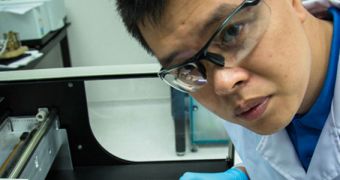A group of investigators with the National University of Singapore (NUS) announce the development of a new manufacturing technique aimed at producing two-dimensional (2D) sheets of a material called molybdenum disulfide (MoS2).
Usually, MoS2 comes as crystals, but researchers have been trying to develop a method of converting it into a graphene-like 2D compound for quite some time. The new exfoliating approach enables the production of high-quality, mono-layer flakes that feature just two dimensions. The latter could be used for numerous applications in the fields of photonics and electronics, including circuit printing.
Chalcogenide compounds such as MoS2 are obtained by combining chalcogen chemicals, such as selenium or sulfur, with transition metals such as molybdenum. The materials obtained in this matter can be used to create new thin solar films, advanced photodetectors, and flexible logic circuits, IEEE Spectrum reports.
“Our team has developed an alternative exfoliating agent using the organic salts of naphthalene and this new method is more efficient than previous solution-based methods. It can also be applied to other classes of two-dimensional chalcogenides,” explains NUS professor Loh Kian Ping, the leader of the study.

 14 DAY TRIAL //
14 DAY TRIAL //